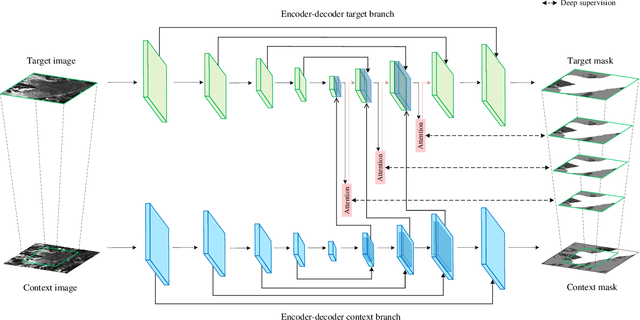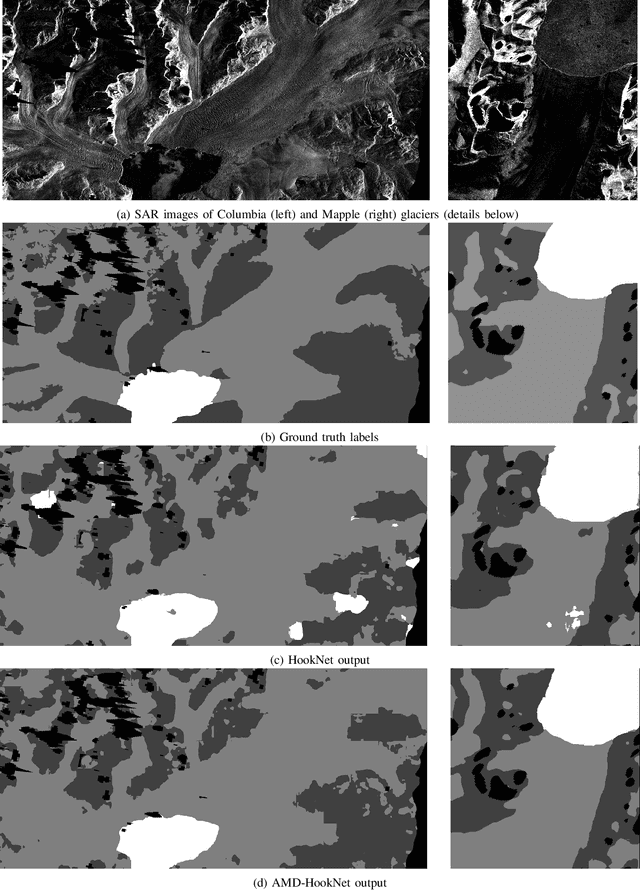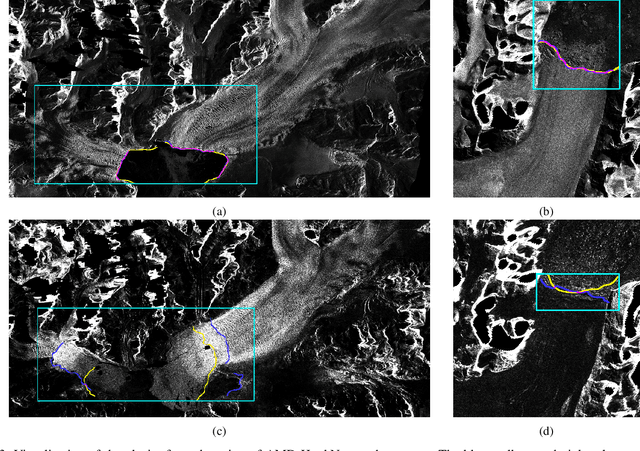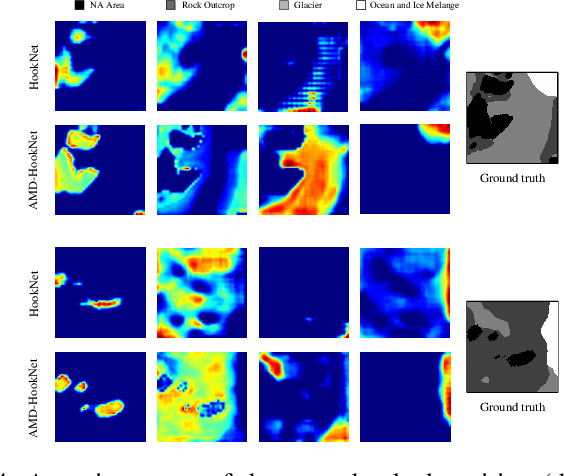Nora Gourmelon
Comparison Study: Glacier Calving Front Delineation in Synthetic Aperture Radar Images With Deep Learning
Jan 09, 2025Abstract:Calving front position variation of marine-terminating glaciers is an indicator of ice mass loss and a crucial parameter in numerical glacier models. Deep Learning (DL) systems can automatically extract this position from Synthetic Aperture Radar (SAR) imagery, enabling continuous, weather- and illumination-independent, large-scale monitoring. This study presents the first comparison of DL systems on a common calving front benchmark dataset. A multi-annotator study with ten annotators is performed to contrast the best-performing DL system against human performance. The best DL model's outputs deviate 221 m on average, while the average deviation of the human annotators is 38 m. This significant difference shows that current DL systems do not yet match human performance and that further research is needed to enable fully automated monitoring of glacier calving fronts. The study of Vision Transformers, foundation models, and the inclusion and processing strategy of more information are identified as avenues for future research.
AMD-HookNet for Glacier Front Segmentation
Feb 06, 2023



Abstract:Knowledge on changes in glacier calving front positions is important for assessing the status of glaciers. Remote sensing imagery provides the ideal database for monitoring calving front positions, however, it is not feasible to perform this task manually for all calving glaciers globally due to time-constraints. Deep learning-based methods have shown great potential for glacier calving front delineation from optical and radar satellite imagery. The calving front is represented as a single thin line between the ocean and the glacier, which makes the task vulnerable to inaccurate predictions. The limited availability of annotated glacier imagery leads to a lack of data diversity (not all possible combinations of different weather conditions, terminus shapes, sensors, etc. are present in the data), which exacerbates the difficulty of accurate segmentation. In this paper, we propose Attention-Multi-hooking-Deep-supervision HookNet (AMD-HookNet), a novel glacier calving front segmentation framework for synthetic aperture radar (SAR) images. The proposed method aims to enhance the feature representation capability through multiple information interactions between low-resolution and high-resolution inputs based on a two-branch U-Net. The attention mechanism, integrated into the two branch U-Net, aims to interact between the corresponding coarse and fine-grained feature maps. This allows the network to automatically adjust feature relationships, resulting in accurate pixel-classification predictions. Extensive experiments and comparisons on the challenging glacier segmentation benchmark dataset CaFFe show that our AMD-HookNet achieves a mean distance error of 438 m to the ground truth outperforming the current state of the art by 42%, which validates its effectiveness.
 Add to Chrome
Add to Chrome Add to Firefox
Add to Firefox Add to Edge
Add to Edge